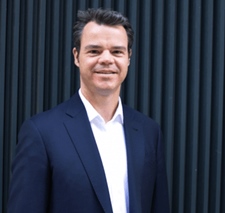
As technologies and consumer expectations develop, the customer service landscape is evolving at an accelerated rate. Megan Neale and Roger Beadle, Co-Founders of Limitless, explore future trends.
Arguably, in 2021 the industry experienced a seismic shift. Customers (and companies) faced unprecedented problems causing query volumes to spike, which put huge pressure on customer service teams. A shift to hybrid working has also forced brands, who hadn’t done so already, to digitally transform, increasing the speed of technology adoption.
These challenges will continue in the year to come. We will see brands build on their successes (and learn from their failures) to create better experiences for their customers. Across the board, we’re seeing an underlying theme emerge: companies are adopting a gig-style staffing model.
As recognised recently by McKinsey, a gig customer service or ‘GigCX’ model “could give customer care the horsepower and flexibility it needs for today’s increasingly volatile markets.” In light of this, there are three important trends that will be indispensable to customer service.
Trend 1: Organisations will prioritise new platforms to support flexible working
Interestingly, many companies who were forced to migrate from brick-and-mortar to remote models at the beginning of the Covid-19 pandemic are now having to revert entire networks back, as the work from home (WFH) model presented significant challenges.
Many organisations have realised that shifting to remote working hasn’t benefitted the customer service agents at all. In addition to the challenges of uncertain and inflexible hours, WFH agents are at risk from being cut off from the company culture. Businesses are also challenged with the ongoing management of workforce management (WFM) agents. Organisations are optimising their WFM, moving them back in house, or keeping the operations in limbo while waiting for the COVID situation to stabilise.
As a result, companies will begin to prioritise new platforms and methodologies that can support flexible and agile working for the long-term. One example is the use of brand advocates and gig customer service experts who can provide global 24/7 customer service.
Considering the ‘Great Resignation,’ adopting a gig customer service model is one of the many answers to the current employment challenges. By empowering brand experts to perform tasks on a cost-per-served basis, businesses can access additional experts only when they are really needed, and in a model that is radically more agile than on-premises or WFM hiring. This enables them to maintain responsive, high-quality customer service during peak periods to improve customer satisfaction and retention.
Trend 2: Empathy and “human” connections will make brands more competitive
Brand advocates, hired via models like Gig customer service, will become a mainstream part of customer service. Think about it: who would you rather get customer service from? A person who has been a customer for many years, a call centre worker, or a chatbot?
Increasingly, customers’ top priority in receiving customer service is empathy and product knowledge, as well as the ability to talk with someone who has experience with the customer base. The ability to connect people who are not only experts in something, but also passionate and true fans of it – that is a real consumer brand benefit that companies will be eager to implement in 2022.
Additionally, we’ll also see the automation pendulum swing towards more people-based solutions in key use cases. Value-generating conversations are better placed with humans, not bots. People can be enhanced or empowered by AI, but not across all customer service and sales needs.
If you are coaching someone on how to do something, or helping them get set up, it is best done by a human who can provide authentic responses. It’s crucial to remember to automate the simple, and to humanise the conversations that are most valuable. These human interactions are more likely to keep a customer longer, extend their lifetime value, and increase their spending over time.
Focusing on the idea of customer success will therefore be an important trend. More organisations will source brand advocates (otherwise known as GigCX experts) to help other customers get more value from their products or services at every point in the customer journey.
Trend 3: Brands need to engage with customers through diverse channels
Alternative service proposition models will continue to challenge the BPO ecosystem. Large technology businesses that have typically been in the consumer space, such as Facebook or Snapchat, are recognising that people want to use their channels not just to speak with their friends, but in all parts of their life, including customer service.
For example, in November 2020, Facebook acquired Kustomer to power the way it provides customer service to businesses on its platform. In that same month, Snapchat parent company Snap acquired Voca.ai, which builds AI-based voice assistants for customer support services.
We’re crossing over from consumer to B2B-style use of these platforms. This introduces new revenue-generating opportunities for the likes of Facebook and Snapchat. It will also drive up the use of asynchronous messaging to engage with brands.
While live chat will be used for activities where there is a need for real-time communication, we could see it disappear or move to asynchronous engagement everywhere within the next few years. When customers interact with a brand, they often must wait until they find enough time to chat with an agent or chatbot. Arguably, this is unaccommodating and can be frustrating for a customer.
As such, as more customers realise the benefits of asynchronous messaging, whereby they can communicate brands during moments of any found time, this trend will naturally come to the fore. According to a recent Forrester report, only 19% of surveyed firms are using third-party asynchronous messaging, even though up to 69% of adults in the US communicate via messaging on a daily basis. By not using asynchronous messaging to interact with customers, many companies are missing out on a key strategic opportunity.
No doubt, adopting this model will allow brands to engage with customers not only on their first-party owned digital assets (e.g. brand websites), but also where the customers want to be. In turn, brands are likely to see demonstrable revenue uplifts and customer loyalty via the rapid adoption of these social media messaging channels is on the rise. One thing brands will have to keep in mind is customer concerns over data privacy, with many consumers nervous about the likes of Facebook and Whatsapp. It’s not about using these channels alone, but meeting customers wherever they feel most comfortable.
The year ahead
2022 will no doubt throw a few more hurdles at customer service teams. It’s simply the nature of the game. When faced with new challenges, what businesses must learn is that ‘out with the old, and in with the new’ may be their saving grace. Adopting new platforms, processes, and ways of meeting with customers is now essential to stay competitive.
As customer expectations and working patterns constantly evolve, businesses cannot afford to take customer service lightly anymore. If an organisation waits too long to get their people and processes right, it can lead to unnecessary costs and dissatisfied customers. For businesses to truly get it right, successful customer service teams will need to harness the benefits of agile, human-led models, not only to support drastic changes to the current landscape, but also to see faster and greater ROI.
About the Authors
 Megan Neale is Co-founder and COO of Limitless, a Gig CX platform powered by AI that is empowering people to earn money for providing brilliant customer service for brands they love. Megan is widely regarded as a thought leader in digital innovation for customer care. Her passion for “customer & client first” combined with her constant drive for innovation led her to co-found Limitless in 2016.
Megan Neale is Co-founder and COO of Limitless, a Gig CX platform powered by AI that is empowering people to earn money for providing brilliant customer service for brands they love. Megan is widely regarded as a thought leader in digital innovation for customer care. Her passion for “customer & client first” combined with her constant drive for innovation led her to co-found Limitless in 2016.
 Roger Beadle is the CEO and Co-founder at Limitless. Roger is a UK-based entrepreneur and business leader who is reinventing how customer service is delivered via the gig economy. After establishing several businesses in the contact centre industry, Roger co-founded Limitless with Megan Neale in 2016.
Roger Beadle is the CEO and Co-founder at Limitless. Roger is a UK-based entrepreneur and business leader who is reinventing how customer service is delivered via the gig economy. After establishing several businesses in the contact centre industry, Roger co-founded Limitless with Megan Neale in 2016.
Limitless is a gig-economy platform that addresses some of the biggest challenges faced by the contact centre industry: low pay, high attrition and access to new talent.
Previously, Roger and Megan helped to build one of the largest privately-owned outsourced contact centre business in Europe, before selling the business to the global conglomerate Hinduja Group. They were also both founding shareholders of Semafone, the leader in PCI compliant security solutions for contact centres globally.




